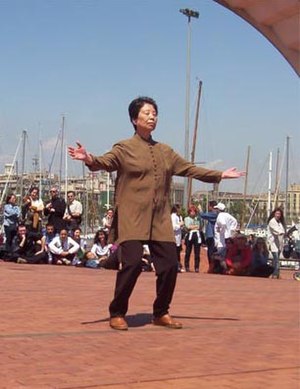 Image via Wikipedia
Image via Wikipedia

Qigong (or ch'i kung) is an internal Chinese meditative practice which uses slow graceful movements and controlled breathing techniques to promote the circulation of qi within the human body, and enhance a practitioner's overall health. References to things analogous to the qi taken to be the life-process or “flow” of energy that sustains living beings are found in many belief systems, especially in Asia. Philosophical conceptions of qi date from the earliest recorded times in Chinese thinking. One of the important early cultural heroes in Chinese mythology is Huang Di (the Yellow Emperor). He is identified in the legends of China as the one who first collected and formalized much of what subsequently became known as traditional Chinese medicine.

The term psychokinesis (from the Greek ψυχή, "psyche", meaning mind, soul, heart, or breath; and κίνησις, "kinesis", meaning motion; literally "movement from the mind"),[1][2] also known as telekinesis (Greekτῆλε + κίνησις, literally "distant-movement"), sometimes abbreviated PK and TK respectively, is a term coined by publisher Henry Holt to refer to the direct influence of mind on a physical system that cannot be entirely accounted for by the mediation of any known physical energy. Examples of psychokinesis could include distorting or moving an object,] and influencing the output of a random number generator.
The study of phenomena said to be psychokinetic is an aspect of parapsychology. Some paranormal researchers believe that psychokinesis exists and deserves further study, although the focus of research has shifted away from large-scale phenomena to attempts to influence dice and then to random number generators.
![Reblog this post [with Zemanta]](http://img.zemanta.com/reblog_e.png?x-id=0824eb50-c577-45a5-b7c3-20be5ac69dd8)
No comments:
Post a Comment